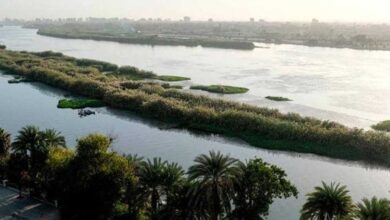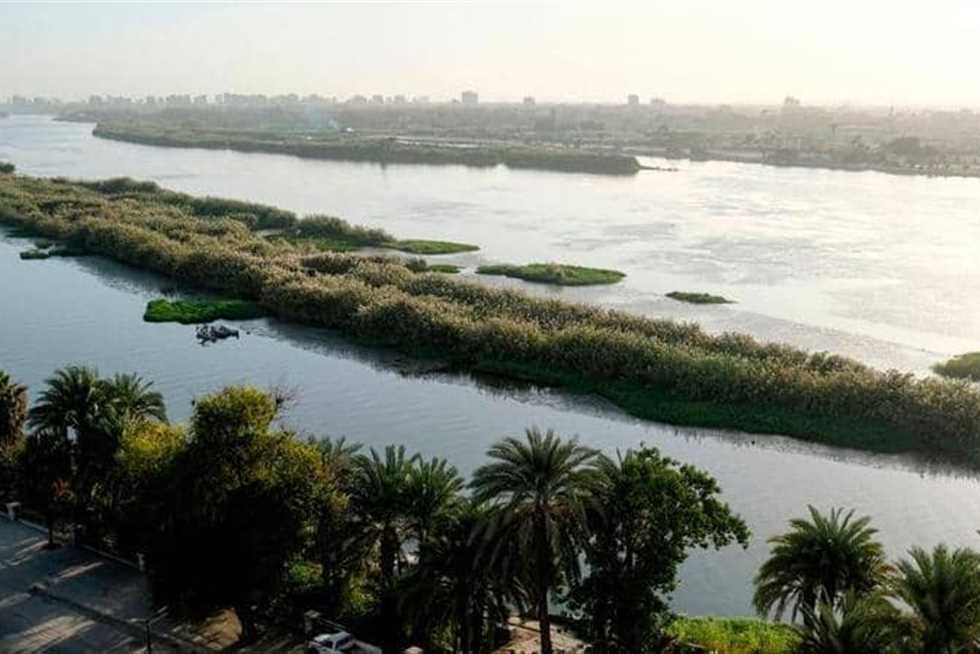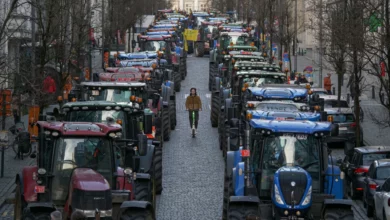A getaway into the countryside usually means fleeing as far as possible. But if your budget and time are short you can actually find an inexpensive and easy escape … in the very heart of Cairo.
Spending a few hours on one of the Nile’s rural islands, you get to know about their neglected nature and population.
You may have noticed while crossing the Nile on the ring road the unexpected greenery of the island on which the bridge's pillars are built. This is Gezirat al-Dahab, a golden island not considered worth linking with the infrastructure. You can access it from the Maadi Corniche, where private feluccas sail back and forth for a few Egyptian pounds.
Its twin island is Gezirat al-Qursaya, easily accessible from the other side of the river, on Bahr al-Azam Street in Giza. A stairway surrounded by street fish sellers leads to the Nile. There, among kids swimming, a manually-pulled ferry boat crosses the 60-feet watercourse that separates the island from the heart of the city.
As you land on one of the two islands, you will be immediately struck by the emptiness of the place. You will have no choice but to follow the only clay path. Noises of the city will fade as you take a relaxing stroll among rushes, fields, and branches of the Nile covered by water lilies.
There is no doubt that your first encounters will be with either white egrets, donkeys or cows. But human inhabitants usually do not fail to notice the presence of outsiders.
Ploughing their land with a cow-pulled cart or quietly guarding their homes in the shade, they will with no doubt invite you to share a cup of tea. This is a chance to listen to stories of their uncharacteristic life in Cairo.
Farmers and fishermen whose families have lived on the islands for generations make up most of the population. “I was born here, my father was born here, and my son was born here!” Mohamed says proudly while giving us a tour of his land.
Most live in private houses, but the southern part of Gezirat al-Qursaya also features a small urban centre made of redbrick buildings, where families have extended.
Besides their original populations, the islands have been receiving newcomers. Some city-dwellers – mainly doctors, engineers and artists – and reportedly some foreigners from the Gulf have elected one of these natural enclaves on the Nile to build their second home. You will occasionally catch sight of luxurious retreat villas, and in front of some private yachts berth.
Inhabitants praise the building of Egypt's High Dam because it protects them from the river’s floods and has made both life and agriculture easier throughout the year. But with the exception of this, they seem sceptical of the projects the government has been designing for their land.
The lack of infrastructure is one of their main concerns. A sewage system is lacking and potable water is available only a few hours per day. In terms of transportation, they complain of the absence of any bridges, as ferries make their route into the city – including to schools and hospitals – inflexible, exhausting and costly.
But there is more. These oases of peace are also increasingly jeopardized by state policies. In reaction, a whole culture of resistance has flourished among the inhabitants. A few months ago, Gezirat al-Qursaya celebrated the fourth anniversary of its victory against an urban redevelopment project that planned the displacement of the population. And more recently, farmers had to fight to get back some land that had been taken over by the army during the revolution.
There is a big chance that spending a few hours in one of these havens of calm will make you understand the population’s attachment to their land.




